Brahmaea tancrei
Austaut, 1896
Brahmaea tancrei male from Korea
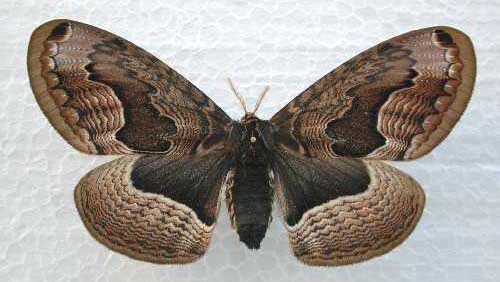
Brahmaea tancrei male from Korea
Brahmaea tancrei Austaut, 1896 flies in Amur, Siberia and in the Russian Far East, Primorski Krai, Khasansky regions into Korea, China and southwards to Indonesia.
Visit Brahmaea tancrei Siberia, courtesy of Leroy Simon.
Moths are on the wing in April, probably as a single brood.Larvae feed during the months of May and June and will accept privet (Ligustrum ovalifolium and Ligustrum vulgare) in captivity. Privet may also be the natural host. |
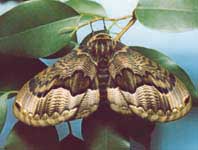 |
According to Scott Henninger, "The larva have very interesting coloration, and will often make noise when disturbed (a kinds of cross between a squeak and chirp)."The third instar is mostly a tan color with a violet hue on its back. The twist in the "antennae" is very prominant in this stage." Image courtesy of Scott Henninger. |
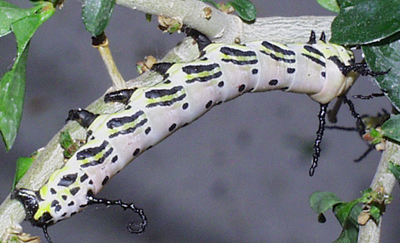 |
Instars 1-3 have the elongated "horns".The fourth and fifth instar larvae lose their elongated scoli and develop false eyespots on the dorsal surface of the thoracic segments. When disturbed, larvae assume a defensive posture, accentuating the eyespots, and wave the head and thoracic segments back and forth as if to strike. Photo courtesy of Scott Henninger | 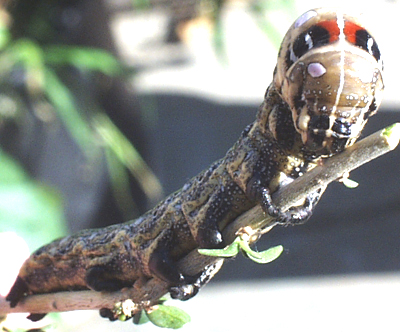
|
Mature larvae, which lack the elongated scoli of the first, second and third instars (right), descend stems and pupate underground or under surface litter.Pupae can be stored indoors if kept at temperatures from 1-6 Celsius. They should not be subjected to freezing temperatures. |
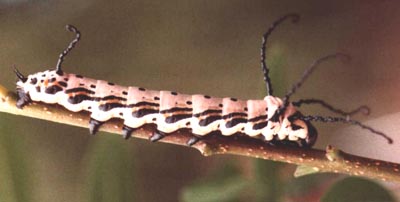 |
In the final instar, false eyespots replace the thoracic scoli, but the "eyespots" are usually only visible when the larvae assumes a defensive posture, curling the head down.The larvae are quite similar to Brahmaea certhia throughout their development. |
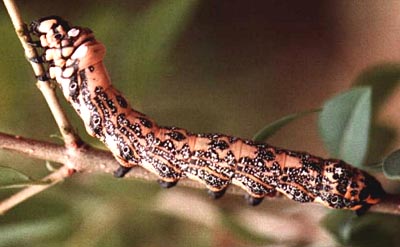 |
Larvae feed on Ligustrum obtusifolium and probably other Ligustrum species. Mature larvae descend host stems and form relatively smooth pupae with very short cremasters.I suspect the larvae will pupate without soil under some loose paper towels. Image courtesy of Scott Henniger. For more information and images, visit http://csce.unl.edu/~scotth/samantha/moths-butterflies.html?page=brahmaea
| 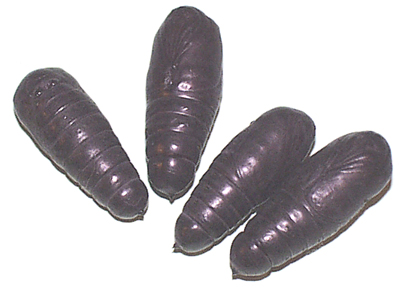 |
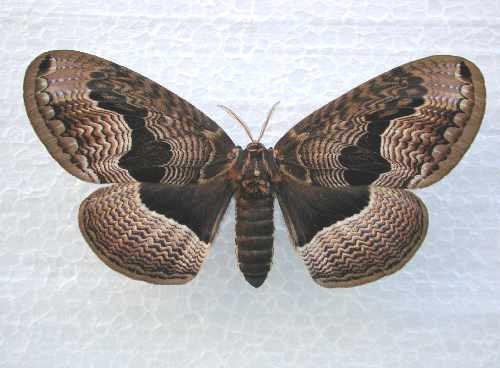
Brahmaea tancrei female from Korea
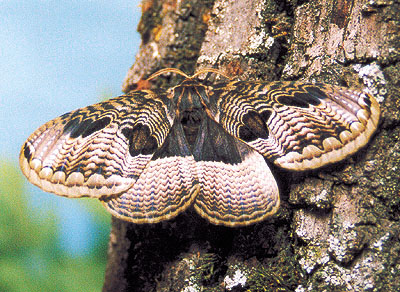
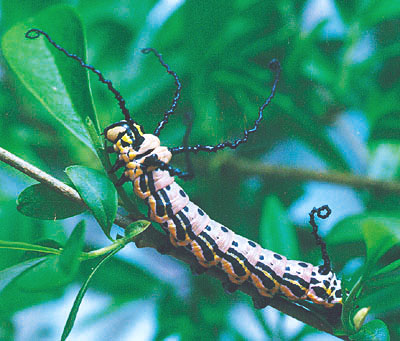
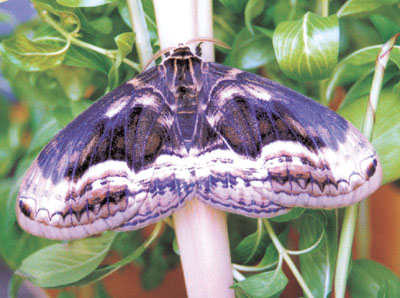
Alan Marson has written an excellent article on the rearing of
Brahmaeidae.
Visit Rearing & breeding Brahmaea hearseyi in the UK.
Use your browser "back" button to return to the previous page.
Return to Main Brahmaeidae Index
Return to Brahmaea Index